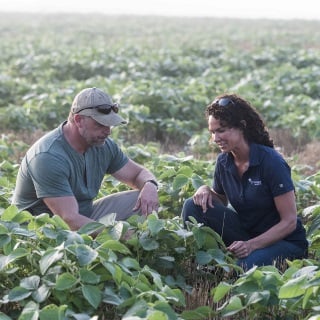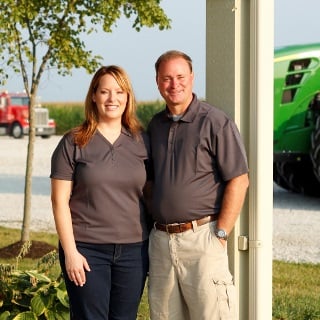Livestock producers have seen their share of ups and downs over the last few years: trade wars, pandemic-spurred supply chain disruptions, labor shortages and high feed costs. With more uncertainty ahead – drought, a new wave of COVID-19, global market fluctuations, as well as legislative and regulatory changes – the need for solid planning and strong partnerships are more important than ever.
“Success is never accidental,” says Farm Credit Mid-America’s Josh Davis, Vice President of Food and Agribusiness specializing in beef and timber. “You have to begin with the end in mind.”
That means working with strategic partners like Farm Credit Mid-America that have the resources and expert guidance producers need to plan, mitigate risk and maximize opportunity in both good and difficult times. More than a lender, the cooperative’s team members are industry specialists that stand side-by-side with customers to navigate the ever-changing marketplace.
“With analysts that work only in swine or only in cattle, we can provide tactical feedback, specialized coaching and benchmarking for our customer’s operations,” says Jess Campbell, Vice President of Food and Agribusiness specializing in swine. “That kind of specialization can help make the difference for producers as they face both long-term and short-term challenges and opportunities.”
Capitalizing now, planning for what’s next
The high prices and demand that livestock producers have recently enjoyed aren’t guaranteed to stick around, Farm Credit Mid-America’s experts say, especially with uncontrollable factors at play. Labor shortages continue to present a challenge, while drought in the western U.S. endangers prices nationwide as producers are forced to liquidate cattle. Meanwhile, pork producers also struggle with the threat of African Swine Fever (ASF), and the possibility of decreased export demand as China rebuilds its swine herd and moves to commercial-style operations.
Building up working capital now can help withstand swings in commodity prices, export demand and disruptive events, providing much-needed cash flow if prices and demand decrease.
“One of the best things producers can do is build a war chest of liquidity while we’re enjoying these high prices, even if that means delaying capital purchases,” Campbell says. “That’s easier said than done coming off a few difficult years, but that liquidity is the best insulator to volatility.”
She also advises customers to evaluate marketing agreements and negotiate contracts well before they expire, especially now while prices are high. “Start negotiating a year or two before the contract ends, while you’re still in the driver’s seat.”
Shane Williams, financial officer for Farm Credit Mid-America in Athens, Tenn., and beef farmer, suggests producers also guard their operations against volatility by looking at “all the small things,” like developing strategic partnerships, locking in feed costs, pre-buying commodities and looking for new marketing opportunities. Producers could identify stockyards with premiums for health programs, uniformity or weaned cattle, Williams says, and look for new local opportunities.
“The COVID-19 era seemed to accelerate video and online marketing opportunities while freezer beef demand surged to some of its highest levels,” he says. “Consumers were anxious to buy beef locally. Using social media and plugging into these trends will be important to producers.”
Don’t go it alone
Whether looking long-term or short-term, every operator needs a team of experts and trusted advisors around them. From core production to financials to animal health, a specialized team will help producers benchmark and offer valuable feedback to find and fix inefficiencies.
“The most successful customers I’ve had recognize that they don’t have all of the answers,” says Davis, who has worked with Farm Credit Mid-America for 15 years. “They have a team of experts at their side: CPA, attorney, veterinarian, lender. It can’t be minimized how important that is.”
Working with a specialized lender like Farm Credit-Mid America means working with a team that understands the nature of the industry – highs and lows.
“Agriculture is a cyclical industry. It doesn’t matter how good you are, there are going to be times that you make money and there are going to be times that you don’t,” Davis says. “It’s imperative that you have a lender that understands that. We know what it means to be in agriculture, and we stand side-by-side with our customers through thick and thin.”






